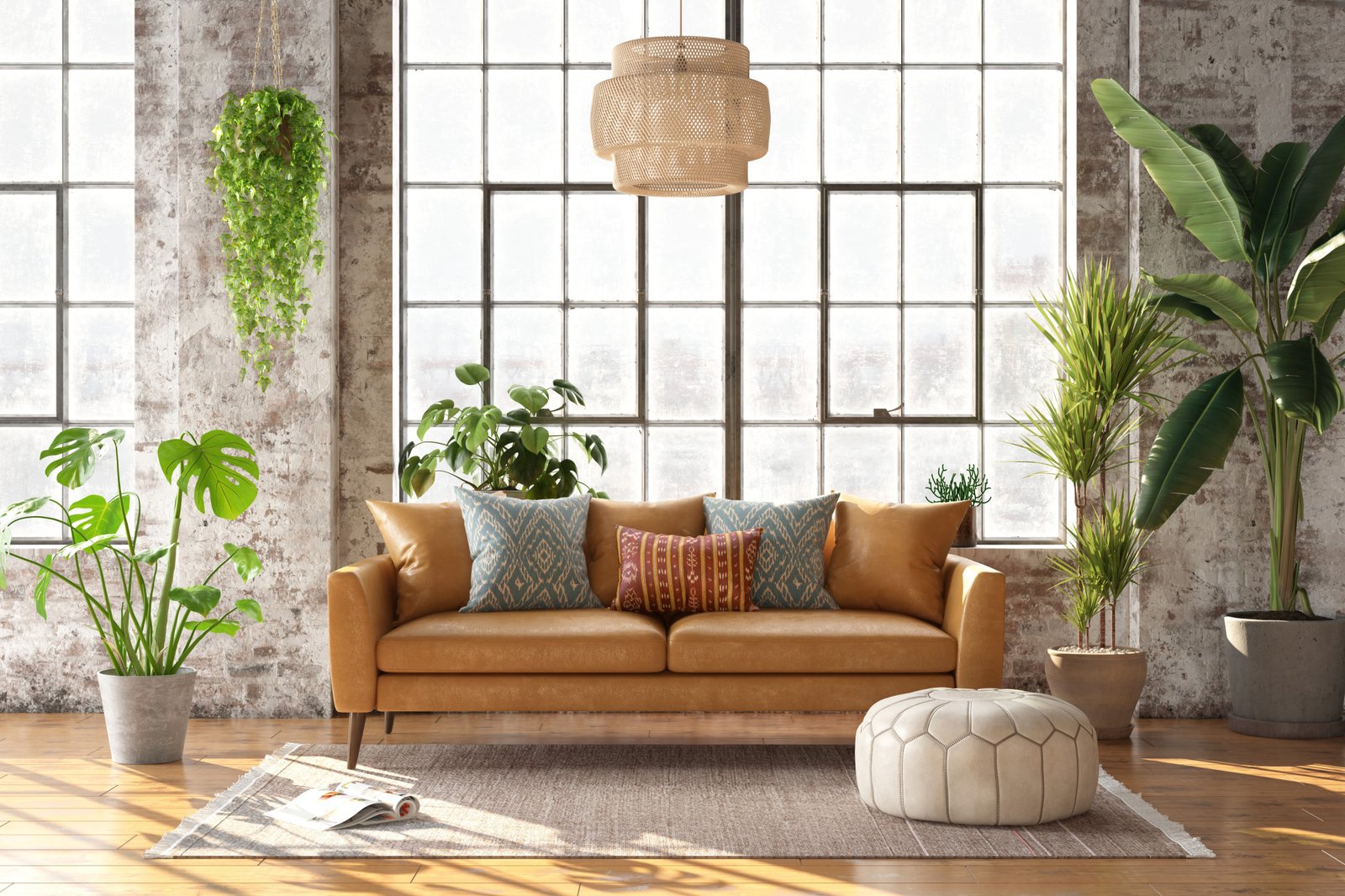
15 Features All Eco-Friendly Homes Need
What if you could help the planet and your finances simultaneously? You can, and it all starts with building an eco-friendly home.
You don’t have to turn your house into a windmill or solar farm (although you can if you want to). Plenty of sustainable and green ways exist to build the home of your dreams.
Read on to learn about all the eco friendly homes features should have.
1. Install High-Performance Windows
Having high-performing windows is one of the most important features that an eco-friendly home needs. The windows are essential for providing better insulation, reducing air leaks, and keeping cool air inside during summer.
Not only are high-performing windows great for saving energy. It also reduces the carbon footprint of the home.
They are also affordable and easy to install. The windows should feature low-emissivity glass and top-of-the-line frames and hardware.
By installing high-performance windows, homeowners can enjoy a reduction in their energy bills. It lowers the amount of energy used by their homes. This is a great way to increase the efficiency and sustainability of any home.
2. Consider the Passive Solar Design
Eco-friendly living needs to consider passive solar design to maximize energy savings. This includes considering things like the size and orientation of windows. Know how to shade them during the summer best.
Appropriate overhangs and shutters should be used to reduce sunlight and heat in the summer. This allows it to come in during the winter. Proper insulation and air sealing should be used to control the temperature.
A green roof can help insulate the house and reduce the energy used for heating and cooling. Other features like energy-efficient lighting, water-saving appliances, and solar panels should also be incorporated.
It is ultimately, choosing the right type of material and the proper placement and design. These are key when building eco-friendly homes.
3. Install a Drip Irrigation System
Eco-friendly homes need several features to reduce their negative impact on the environment. The most crucial part all eco-friendly homes need is a drip irrigation system. Drip irrigation is an efficient way of delivering water to plants without wasting any water.
It distributes small amounts of water directly to the root zone of plants. It can be absorbed quickly and thoroughly. It also eliminates runoff and saves money on water bills.
Additionally, it is an eco-friendly option that can help reduce environmental degradation caused by water wastage. Moreover, it helps conserve water and reduce soil erosion.
Installing a drip irrigation system is a great way to ensure the home is as eco-friendly as possible. This also provides efficient water use.
4. Invest in Energy-Efficient Appliances
Eco-friendly homes are rapidly becoming an increasingly popular option. It is to lessen their carbon footprint and reduce their environmental impact. Make sure that your home is truly eco-friendly.
There are certain essential features that it should have in place. Firstly, you should invest in energy-efficient appliances. Smart fridges, washing machines, and dishwashers with an A++ energy rating are significant steps towards a more eco-friendly lifestyle.
Secondly, energy-efficient lighting is a must. LED bulbs and solar-powered lighting are excellent ways to save energy in your home. Finally, insulating your home with suitable materials will keep the warmth inside, meaning you don’t need as much power.
This could be anything from double glazing to sheep’s wool insulation. These features will help make your home much more energy-efficient and eco-friendly. This saves you money and helps to reduce your impact on the environment.
5. Use Eco-Paints
To consider home improvements, eco-paints are non-toxic, have low odor, and contain no volatile organic compounds. This provides an excellent washability of colors for easy interior updates. Additionally, an eco-friendly home should be adequately insulated to reduce energy costs.
Eco-friendly houses should also promote the preservation of natural resources. This incorporates the following:
- natural ventilation
- natural light
- and natural cooling solutions
Finally, sustainable landscaping should support the environment with drought-resistant native plant species. Incorporating eco-friendly paints, materials, and features into a home. It is an excellent step towards creating an eco-friendly home.
6. Invest in Renewable Energy Options
Eco-friendly homes are designed to be energy efficient and sustainable. They often prioritize renewable energy sources. One of the most essential features of these homes is insulation.
Insulation helps keep living spaces from losing heat in the winter and overheating in the summer. Eco-friendly homes also need energy-saving windows and doors to minimize heat loss. Additionally, energy-efficient are essential to reduce electricity bills and reduce environmental impacts.
Solar power is another renewable energy option. This allows homeowners to take advantage of free energy from the sun. Other green features include water-saving fixtures and rainwater harvesting systems.
These systems help keep freshwater resources from being overused. A well-insulated home is a cornerstone to a more sustainable lifestyle. With renewable energy options and energy-saving features, eco-friendly homes can provide comfort and peace of mind.
7. Invest in Curtains or Blinds
Eco-friendly homes need to invest in curtains or blinds for multiple reasons. First, they can help protect furniture and rugs from fading in sunlight by absorbing UV rays. Energy bills can be reduced using heavier curtains or double-layered blinds to insulate walls and windows.
When the sun isn’t shining, curtains and blinds are a great way to retain warmth. Beyond that, they also provide privacy and are essential for any green home.
Quality window treatments can keep the warm air out during the warmer months and block cold drafts during winter, leading to less strain on the home’s heating and cooling systems. Moreover, curtains or blinds come in various environmentally friendly materials, such as bamboo and natural fabrics, to further contribute to an eco-friendly home.
Investing in quality curtains or blinds is a simple and affordable way to make one’s house more energy efficient and help contribute to a greener planet.
8. Install Solar Panels
To make a home truly eco-friendly, it must have certain features to reduce the environmental impact. One of the most essential features of an eco-friendly home is solar panels. Installing solar panels on the ‘s roof house helps generate energy from the sun.
This reduces reliance on energy generated from fossil fuels. It also reduces the home’s energy bills in the long run.
Other features all eco-friendly homes need include energy-efficient windows, LED lightbulbs, double-glazed windows and appliances, and insulation. This is to keep energy bills low.
Furthermore, to make a home truly eco-friendly, it should incorporate natural materials wherever possible, from recycled timber for flooring to natural dyes for fabrics.
Together, these features will help to create an eco-friendly home that is both sustainable and efficient. The environmental impact of solar also helps not just in our homes but in our whole community because it saves money and reduces greenhouse gas emissions.
9. Install a Cool Roof
All eco-friendly homes need to feature a cool roof. A cool roof is an excellent option for reducing energy costs and keeping the indoors comfortable during the hot summer. The top is designed to reflect sunlight and absorb less heat.
This keeps the living areas cool and decreases the need for air conditioning. Additionally, a cool roof helps reduce the amount of ultraviolet radiation that enters the house. It can minimize rooftop temperatures by up to 50 degrees.
The roof can also be painted reflective to enhance its effects further. By installing a cool roof, homeowners can reduce energy costs, protect their property, and improve indoor comfort. It is an eco-friendly solution that promises plenty of benefits.
10. Install a Water Filter
An eco-friendly home must include a water filter for drinking and bathing. This is important to reduce the amount of contaminants in the water and help save the environment. Water filters remove unwanted contaminants from the water, including:
- lead
- chlorine
- hazardous substances
Water filters can also make the water safer to drink. It removes bacteria and other impurities that can cause health problems. For bathing, this can help reduce the amount of chemicals that can irritate skin and hair.
In addition, it can help conserve water since the filters allow for smaller water outlets, thus reducing the amount of water used. Installing a water filter is essential for any eco-friendly home.
11. Switch to Smart Power Strips
It is important to consider various energy-saving features. One of the most essential features is the switch to intelligent power strips.
Smart power strips automatically turn off the power when the device is on standby or when not in use. It helps the homeowner avoid wasting energy.
They can be controlled with an app, allowing complete control of energy flows. Smart power strips are considered an essential part of an eco-friendly home and should ideally be included in the home’s infrastructure.
Other features may include energy-efficient appliances, LED lighting, programmable thermostats, and solar panels. All these will help reduce the home’s energy consumption, lowering energy bills and reducing carbon emissions.
Smart power strips are an essential feature of any green home, but only one component of an eco-friendly home.
12. Create a Compost Bin
Eco-friendly homes must include specific features to do their part in conserving resources. One of those essential features is a compost bin. Composting is a natural process of decomposing organic material such as:
- food scraps
- lawn clippings,
- leaves
- other plant materials
This process returns the necessary nutrients to the soil. This helps to reduce landfill waste and add nutrients to the garden.
An eco-friendly home needs a compost bin to take full advantage of this natural fertilizer. It can be anything from an outdoor container covered with a lid to an indoor chest with an air-tight seal.
The choice is up to the homeowner, but the benefits are undeniable. Not only does a compost bin reduce the amount of waste that would go to the landfill.
It also makes use of wasted nutrients to replenish the soil. An eco-friendly home needs a compost bin to help support sustainability and keep the environment healthy.
13. Plant an Energy-Efficient Garden
An energy-efficient garden is an essential feature of all eco-friendly homes. One fundamental way to create such an energy-efficient garden is through native plants. It requires less water and energy to be maintained.
Additionally, an energy-efficient garden should reduce water usage with efficient watering systems. Incorporating composting and other sustainable gardening practices helps reduce energy consumption and create a more eco-friendly environment.
Solar panels can also be utilized to provide additional energy for the garden. Beyond these environmental effects, energy-efficient parks provide a valuable aesthetic and calming effect for all homes. With thoughtful design, these gardens can bring life to any outdoor space, improving the atmosphere and delighting the senses.
14. Buy Recycled Products
To achieve this goal, certain features must be included. First, buildings should be constructed with insulated walls, ceilings, and energy-efficient windows and doors to reduce energy loss. Additionally, increased ventilation can improve air quality and lower humidity.
Secondly, incorporating rainwater harvesting and greywater systems can help reduce water usage. Finally, recycled materials should be used wherever possible, including for flooring, insulation, and even roofs, to help reduce the amount of waste from construction.
By implementing these features into an eco-friendly home, it is possible to reduce both energy and water consumption. It reduces greenhouse gas emissions.
15. Use Dryer Balls
Eco-friendly homes should make choices that reduce environmental impacts over the product’s life cycle. Dryer balls are one way to do just that. Dryer balls are made of soft wool or other materials replacing chemical-filled fabric softeners.
They reduce friction and static electricity between clothes, dry laundry faster, and soften and fluff up fabrics. In addition to being eco-friendly, they are reusable for up to 2 years, save money, and are hypoallergenic.
For anyone looking to make their home more environmentally conscious, dryer balls should be near the top of their list. And as other eco-friendly options become available, it’s essential to consider the impact each has in reducing energy, waste, and emissions over the product’s lifetime.
Understanding the Features of Eco-Friendly Homes
Eco-friendly homes are a great way to reduce energy consumption and environmental damage. The key is to include specific design features. Insulated walls and windows, alternative energy systems such as solar panels or wind turbines, and efficient air-conditioning and heating systems are all essential for an eco-friendly home.
To learn more about eco-friendly home design, contact a local contractor today!
Did you find this article interesting? Check the rest of our site today!












